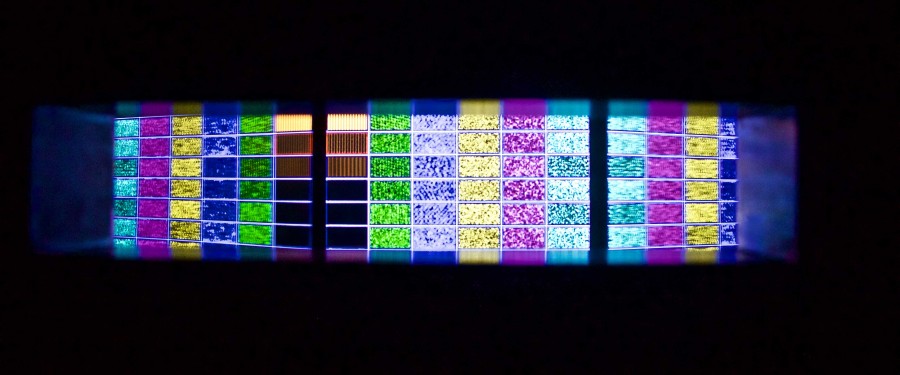Surveillance Exhibit Has Interactive Twist
Journalist and artist Laura Poitras creates an interactive exhibition space where the viewer is immersed into snapshots of post 9-11 America.
February 16, 2016
“Astro Noise” opened at the Whitney Museum of American Art on Feb. 5, showcasing Laura Poitras’ interactive and artistic exploration of the dystopian realities of the post 9/11 world. Poitras, a journalist and filmmaker, is best known for directing “Citizenfour,” the Oscar-winning documentary about Edward Snowden’s revelations of flagitious government surveillance programs.
The five pieces of art within this small exhibit echo Poitras’ filmmaking style: stark and disjointed, but consistently ominous. At the entrance, visitors are confronted by a large video presentation: “O’Say Can You See,” displaying slow-motion footage of faces looking slightly past the viewer at a space in the sky where the World Trade Center once stood. The opposite side of the screen shows U.S. military interrogation videos of two prisoners in Afghanistan, which juxtaposes tragedy with its consequences. This exhibit offers unique artistic storytelling of a refreshingly honest political message.
Most of the works in the exhibit’s darkened rooms are unaccompanied by explanation — and visitors are encouraged to pick up a pamphlet before entering the exhibit. It is fitting that “Astro Noise” keeps tight control of the information visitors are exposed to, since the exhibit is about cataloguing data surveillance. There is still much to be seen: for instance, the “Disposition Matrix” is an L-shaped corridor lined by slits in the wall which reveal bits of classified memos, testimonial footage and alternatingly crude and complex diagrams of surveillance systems. This piece offers information, but forces onlookers to peer through the walls to see fragments of evidence from a secretive universe.
The strength of this exhibit is its interactivity, both aesthetically and politically. Poitras encourages engagement with the surveillance systems that ultimately force all citizens to become subjects. One of the strongest works in the exhibit, “Bed Down Location,” allows visitors to lie down on a large elevated slab in the middle of the room. Above, thousands of lights streak across the dark skies of Somalia, Yemen and Pakistan. The roar of plane engines and crackle of indecipherable voices across radio frequencies transform the blinking stars of the night sky into drones. It is a powerful perspective which creates the unsettling feeling of exposure to an ever-present, invisible threat.
Though the exhibit is small, it does a lot with a little. The artworks largely speak for themselves, showing rather than telling. Those who are searching for more earth-shattering revelations on government surveillance may leave disappointed, but all can find something to enjoy in the unique interactivity. “Astro Noise” is a unique synthesis of art and politics that is well worth a visit.
“Astro Noise” is on display till May 1 at the Whitney Museum of American Art, at 99 Gansevoort Street. Museum entry is free with an NYU ID.
A version of this article appeared in the Feb. 16th print edition. Email Abraham Gross at [email protected].

























































































































































